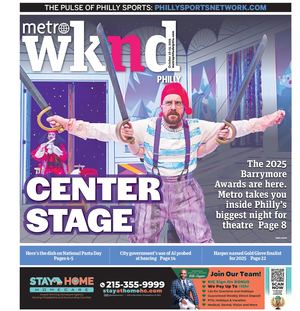 A new report found Philadelphia’s Chinatown may be disappearing.
A new report found Philadelphia’s Chinatown may be disappearing.
Credit: File photo / Rikard Larma
Is Philadelphia’s Chinatown disappearing?
That’s one of the questions at the heart of a report released Wednesday by the Asian American Legal Defense and Education Fund.
The study, titled “Chinatown Then and Now,” reviewed land use and population statistics related to Chinatowns in Boston, New York City and Philadelphia.
“All these Chinatowns are facing the threat of disappearing,” study author Bethany Li of the AALDEF said.
“I think the census numbers really show the changes and shift in demographics in the last three decades.”
Median rents and home values in Philadelphia’s Chinatown rose from 1990 to 2010, outpacing those of the city overall.
So, too, did Chinatown’s population – though the share of those aged 17 or younger dropped, as did the share of those 65 and older, which the report attributed to the decrease in family households precipitated by the rise of luxury and loft living.
“The change from family to non-family households is a significant indicator of gentrification,” Yi said.”Chinatowns are traditionally residential communities of families, not young single professionals. This shift is significant and it will be difficult for Chinatown to maintain the same type of community.”
Study authors said they expected those trends to continue in the coming decade.
The report noted gentrification in Philadelphia’s Chinatown soared in the 1990s, as luxury condominium and apartment developments multiplied in the neighborhood’s core.
Large, publicly funded projects – including the Independence Mall Urban Renewal area to the east, the Vine Street Expressway to the north, the Gallery mall to the south and the Pennsylvania Convention Center to the west – hemmed in the neighborhood on all sides, further restricting the potential for growth.
“There have been repeated large-scale government projects that have negatively impacted Chinatown –the Vine Street Expressway, the Convention Center, the Broad-Ridge Spur, which went underground but still had an impact, the possibility of a stadium and casino, have all been a threat to Chinatown’s ability to exist and to grow,” saidexecutive directorof community nonprofit Asian Americans United Ellen Somekawa.
According to the report, the only viable prospect for Chinatown’s residences and small businesses to grow over the past two decades was to the north, across the expressway, in a neighborhood formerly called Chinatown North.
But that area, instead of being used for affordable housing development, has since been rechristened Callowhill, or the Loft District, by developers converting large industrial properties to luxury living and artist studios for largely non-Asian members of the creative class.
“The escalation of property values north of Vine Street, especially, but in all parts of Chinatown, is also a threat, in that this has been a neighborhood that’s been critical for working class immigrants to enter into the city. And as Chinatown becomes less accessible to new immigrants, that’s a threat to the vital nature of this neighborhood,” Somekawa said.
Plus, threats to the preservation of affordable housing and small businesses persist, including the proposed development of the Reading Viaduct and the possibility of a new casino in the area.
“We’re distressed that the Philadelphia city government seems to be favoring a casino either at Eighth and Market or Broad and Callowhill and, more than that, is supporting the whole notion of casinos developing further in Philadelphia,” Somekawa said, noting casinos don’t just use up land, but also “suck away” resources from neighborhoods.
“It’s distressing that, four years after beating off the last casino, here we are having to confront this again. Having a city government that is not going to protect people against the threat is more than disturbing.”
Study authors made several recommendations to preserve Chinatown.
Those include reinforcing and building more low-income and senior housing, subsidizing local small businesses, prioritizing green and open spaces, strengthening the links between small Asian enclaves elsewhere in the city and in Chinatown and fostering more dialogue with traditional community land owners.
“Chinatown serves a function to new immigrants that is unique – it’s not just any four-square-block territory,” Somekawa said.
“It’s a center of community life, spiritual life, economic life and cultural life that immigrants in the Philadelphia community can access. And if Chinatown is weakened, it weakens the infrastructure for immigrants entering Philadelphia. The city acknowledged the importance of immigrants in helping Philadelphia stop its population decline, but it’s important to follow that up with thinking through public policies that will encourage and support the growth of healthy immigrant communities.”
Yi said called the report “a starting point.”
“We really do encourage, to the extent there is planning going on in cities, that people be genuinely consulted before decisions are made,” she said.
“I think the government needs to make sure residents who are owners and who really make up the community are engaged in the decision-making process, and not in a way that is kind of honorific, but in a way that is actually genuine and real, so that people who are living and working in the neighborhood are the ones really informing decision makers about what is necessary to their communities.”
By the numbers
233%The increase in Chinatown’s white population between 2000 and 2010.
73%The increase in Chinatown’s Asian population during the same time.
$262,700The median Chinatown house value in 2010.
$142,800The median Philadelphia house value in 2010.
186.2%The increase in Chinatown non-family households between 2000 and 2010.
69.6%The increase in Chinatown family households during the same time.


























